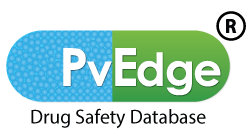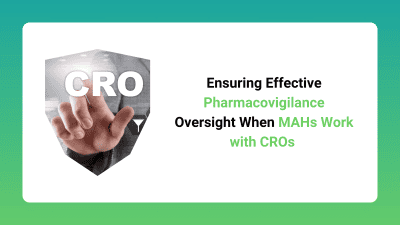The Importance of Pharmacovigilance Oversight
Marketing Authorisation Holders (MAHs) increasingly rely on Contract Research Organisations (CROs) to perform pharmacovigilance (PV) activities such as case processing, signal detection, and literature monitoring. While outsourcing can improve efficiency, it also introduces regulatory risk. Maintaining pharmacovigilance oversight is crucial to ensure CROs adhere to global PV standards, data integrity principles, and regulatory timelines.
Strong oversight ensures MAHs remain accountable for safety data, maintain compliance with agencies such as the FDA, EMA, and MHRA, and can confidently demonstrate control during audits and inspections.
Why Pharmacovigilance Oversight Matters in CRO Partnerships
Outsourcing PV activities allows MAHs to scale operations efficiently, but it does not transfer responsibility. Regulatory authorities consistently emphasise that the MAH retains ultimate accountability for pharmacovigilance compliance.
Pharmacovigilance oversight ensures:
Regulatory Compliance: CROs meet global reporting requirements and adhere to standard operating procedures.
Data Accuracy: Accurate and consistent adverse event reporting reduces inspection risks.
Timely Case Management: MAHs can monitor KPIs to ensure cases are processed within regulatory timelines.
Risk Mitigation: Potential gaps in CRO workflows are identified and addressed proactively.
Without proper oversight, delays, errors, or misreporting can lead to regulatory sanctions, fines, or reputational damage.
Key Strategies for Effective Pharmacovigilance Oversight
Define Clear Roles and Responsibilities
MAHs must establish detailed agreements outlining each party’s responsibilities, expectations, and escalation paths. This ensures CROs know exactly what is expected, and MAHs retain accountability for overall safety compliance.
Implement Robust Quality Agreements
Quality agreements should cover SOP compliance, case management standards, timelines, signal detection responsibilities, and audit obligations. Regular review and updates ensure alignment with changing regulatory requirements.
Use Technology to Monitor Performance
Integrated PV systems and analytics dashboards allow MAHs to track CRO performance in real time. Metrics such as case processing time, completeness of reports, and adherence to SOPs provide actionable insights for corrective action if needed.
Conduct Regular Audits and Reviews
Periodic audits — both remote and on-site — are essential. Pharmacovigilance oversight includes reviewing source documentation, case accuracy, and adherence to regulatory guidelines. Findings should be documented and addressed promptly.
Maintain Continuous Communication
Frequent meetings, clear escalation channels, and documented communication ensure that CROs report any deviations, regulatory updates, or safety concerns without delay.
Leveraging Technology for Pharmacovigilance Oversight
Digital tools have transformed how MAHs maintain oversight over CRO activities:
Cloud-based PV platforms provide centralized access to case data and regulatory reports.
AI-assisted dashboards highlight workflow bottlenecks, trends, and deviations.
Automated notifications ensure regulatory deadlines are never missed.
By integrating technology with governance processes, MAHs can maintain effective pharmacovigilance oversight while optimising resources and reducing manual monitoring.
Common Pitfalls in Pharmacovigilance Oversight and How to Avoid Them
Over-reliance on CROs: Delegating tasks does not remove accountability. Continuous monitoring is essential.
Inconsistent SOP adherence: Clear, aligned processes prevent errors and regulatory gaps.
Insufficient documentation: All oversight activities, audits, and communications must be documented to demonstrate compliance.
Delayed corrective actions: Quick resolution of deviations ensures regulatory confidence and protects patient safety.
Proactive management and structured oversight prevent these common pitfalls, safeguarding compliance and operational efficiency.
Strengthening Compliance with Pharmacovigilance Oversight
Outsourcing PV activities to CROs provides MAHs with operational flexibility, but regulatory responsibility remains with the MAH. Implementing structured pharmacovigilance oversight — through clear agreements, technology-enabled monitoring, audits, and continuous communication — ensures compliance, enhances data quality, and supports patient safety.
By combining human expertise with digital tools, MAHs can maintain control over outsourced PV activities, minimise regulatory risk, and meet the demands of global safety obligations with confidence.



